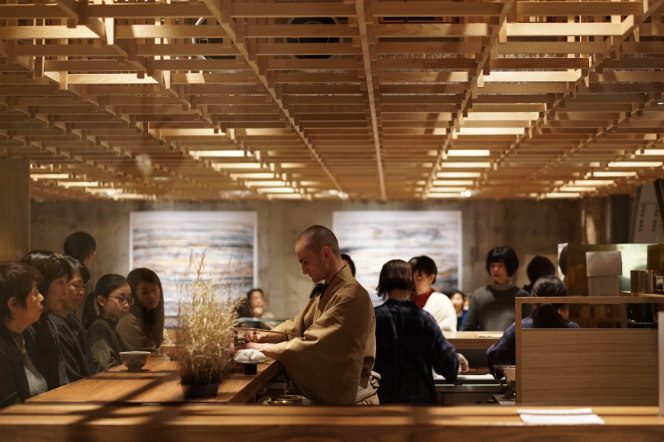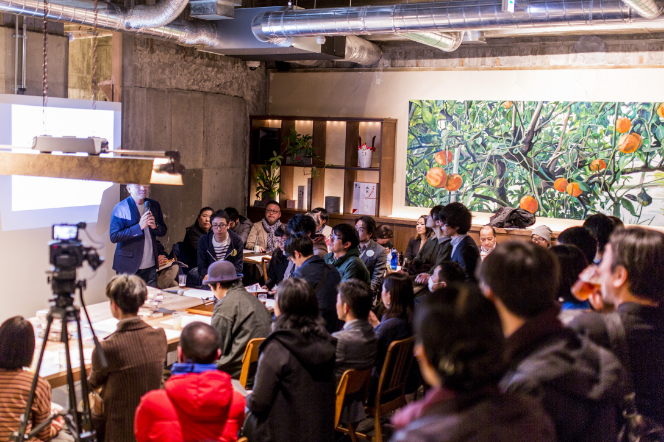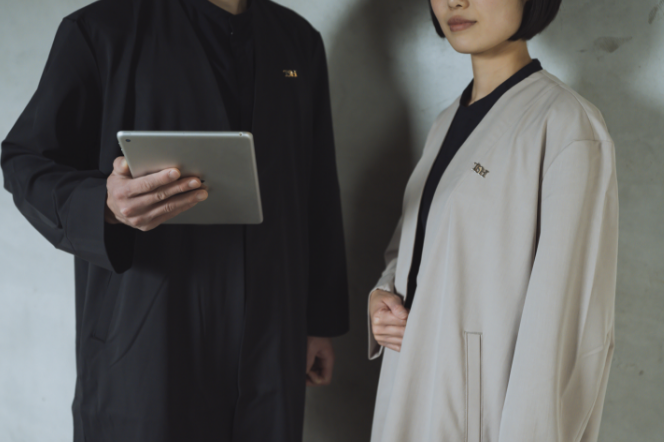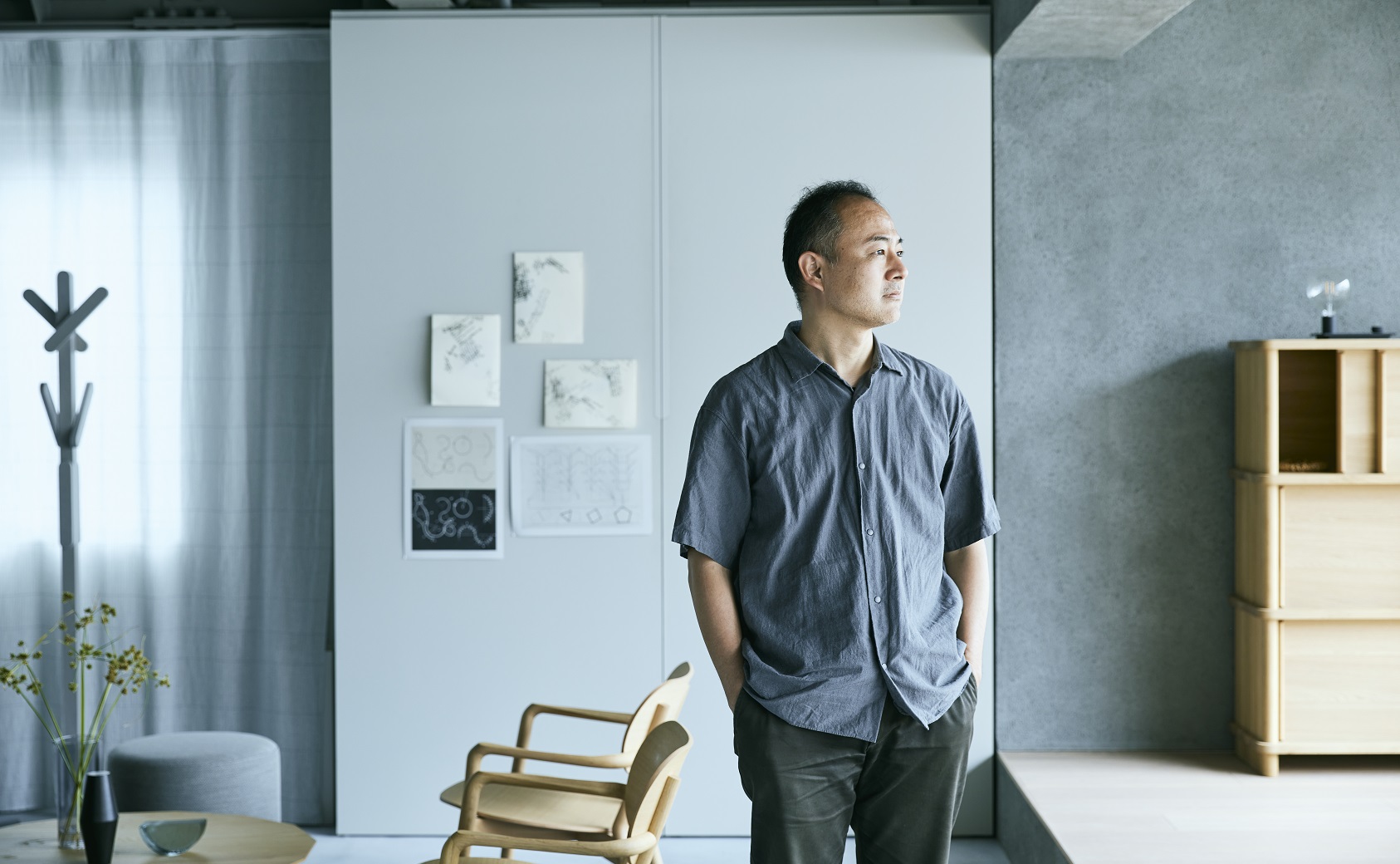
空間の細部に宿るストーリーを感じて、 MIROKU奈良の滞在を最高に楽しむ。
MIROKU奈良の魅力の一つが、鹿の親子も遊びにくる荒池のほとりに張り出したテラスです。「1階をパブリックに開くことが重要」と語り、荒池とラウンジのシームレスな繋がりを設計したのが建築家の芦沢啓治さんです。ここでは、ラウンジや客室の設計に込めた芦沢さんの思いを聞きます。
“WOW!”と“正直”の両立を楽しむラウンジ
──芦沢さんは「正直なデザイン」を掲げています。リビタからは、MIROKU 奈良の設計にあたって利用者を驚かせる“WOW!ファクター”が欲しいと要望しました。“正直”と“WOW!”をどうやって両立させたのですか?
正直なデザインは、自分や関係者とのコミュニケーションにも有効です。要件や時間の制約が積み重なると、どうしても正直ではない部分が出る。そこで不誠実にならずに、「オレは本当に正直なデザインだと思っている?」と自問自答するんです。MIROKU 奈良を正直なデザインで考えると、利用者が快適に奈良滞在を楽しむことが大切です。僕ができるのは、場所で“WOW!”と言わせながら快適な空間にすること。今回は吉野杉の大きな板が手に入ったので、ラウンジにその板を使ったテーブルを置きました。ラウンジでは「WOW! なんて良い場所なんだろう!」という景色に出会えると思います。
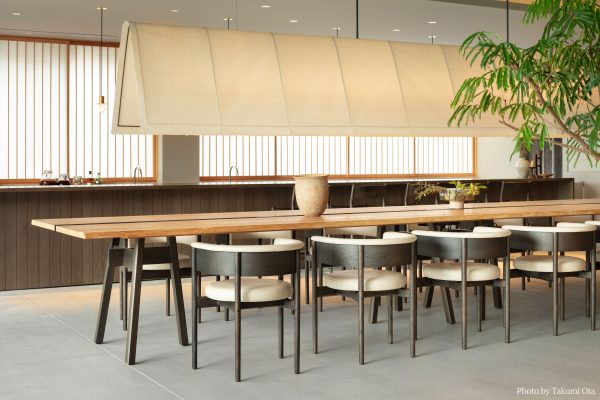
──芦沢さんは、吉野まで素材を見に行ったと聞きました!
行きましたよ。MIROKU 奈良に宿泊する方も行ってほしいですね。吉野の木材は目が詰まっていて、良い状態で山を管理しているのが分かります。山を見上げて、この山から木材が生まれたと実感するのは良い経験だし、吉野杉・吉野檜が確固たるブランドを築いている理由がよく分かると思いますよ。
──吉野杉のテーブルと一緒に存在感を出しているのが、和紙の照明です。存在感がありつつ和紙ならではの軽やかさも感じます。
最初から和紙の照明にこだわっていました。東大寺の大仏の“どーん”とした存在感は奈良を表現するのにぴったりだと思っているのですが、和紙の照明も“どーん”と空間の中心になる大きさでインパクトがありますよね。MIROKU 奈良は遠くに見える早朝の春日山が最高ですが、日が暮れてチェックインしても“WOW!”を感じてほしくて、ラウンジに吉野杉のテーブルと和紙の照明を持ってきました。
──奈良に拠点を置いている『NEW LIGHT POTTERY』の照明も、ホテル滞在の印象に残る場所で使われています。
NEW LIGHT POTTERYのショールームは奈良にしかないので、宿泊される方が興味を持って旅行中に訪れるかもしれません。ホテルに地元の素材やブランドを取り入れれば、旅している場所はこんなモノを作っているのかと体感できる。単純に古い建造物や美術館を巡るだけでなく、違う視点から土地のカルチャーを感じられる旅行になると思うんです。
芦沢さんが空間に込めたストーリーを感じて
──ジュニアスイートとロフトベッドのある4人部屋では、設計の考え方が変わりませんか?
そうですね。限られた面積で4人部屋をつくろうとすれば、空間的に一択しかないことはあります。気を付けたのは、部屋内でトイレが見えたとしてもトイレの扉に見えない工夫をすること。きれいな扉であれば、トイレから人が出てきても扉が閉まれば見え方はきれいです。
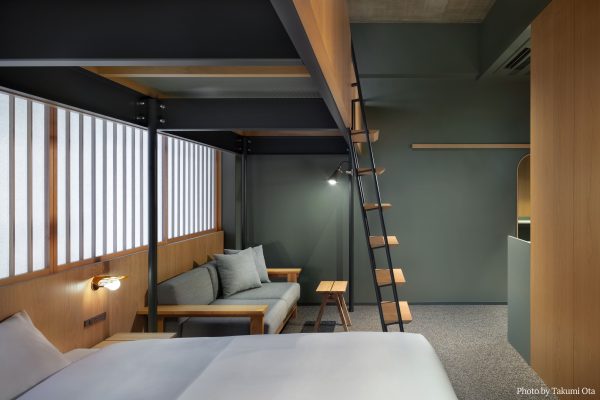
二段ベッドを置いたロフトの部屋は、すごくきれいに仕上がりました。今までは2×4の角材の脚でしたが、今回はスチールの脚にしてきれいに収まっています。完成度が高いので、今までにない財産を残せたと思います。今後のシェアホテルズでは、もう元には戻せないと思いますよ(笑)。
──芦沢さんは設計当初に「1300年以上続く奈良のまちだからこそ、本質的に良いものを長く使うことをサステナブルと捉えたい」と話しましたね。
ホテル内で、僕たちの奈良に対する解釈を感じてもらうためのスタイリングが必要でした。そのために新しいモノを買うのではなく、例えば吉野の山で朽ちている木材やNEW LIGHT POTTERYの廃材、ホテルスタッフが奈良公園で拾ってきた石……そういうモノで空間と人の距離を縮めて、新しいストーリーを持ち込みたいんです。土地のモノを再利用したスタイリングも、サステナブルな活動の一つだと思っています。
芦沢啓治さんの奈良のお気に入り
有名な観光地は、何度訪れても新たな発見がある
東大寺はやっぱりすごい! 目のあたりにすると、よくぞ1300年間も残してくれたと感じます。僕は、大仏さんの鼻の穴と同じ大きさで、無病息災・祈願成就のご利益があると言われている『柱の穴くぐり』もしましたよ。
京都ではできないことを、奈良でする
京都の旅行は、計画的に目的の場所を観て食べて、スケジュールをコンプリートしたくなります。でも、奈良旅行はもっとゆっくりする旅程がおすすめです。午前中に東大寺や唐招提寺など奈良を代表する観光地を巡って食事をしたら、午後は何もせずにMIROKU奈良を堪能するのはどうでしょうか。
建築にも注目したい老舗の奈良漬
江戸時代末期に創業された今西本店さんの奈良漬がおすすめです。国産の原材料にこだわって作られていて、とても美味しかったです。訪れたら、三条通り沿いにある歴史ある建物にも注目してください。
芦沢啓治 / KEIJI ASHIZAWA DESIGN
建築家
1996年横浜国立大学建築学科卒業。卒業後、建築家としてのキャリアをスタートし、super robotでの数年間にわたる家具制作を経て、2005年芦沢啓治建築設計事務所設立。11年東日本大震災を受け地域社会自立支援型公共空間、石巻工房を創立。14年石巻工房を家具ブランドとして法人化。建築、インテリアだけにとどまらず、カリモク、IKEAなどの家具ブランドとの協業や、Panasonic homesとのパイロット建築プロジェクトなど幅広い分野で活動。建築、リノベーションから照明・家具デザインに一貫するフィロソフィー「正直なデザイン/Honest Design」から生み出される作品は、国内外から高く評価されている。


